Surfboard
Beginner Surfboard Guide | Finding the Best Surfboard For You Beginners
Introduction
Surfboard – or wakeboard – is a narrow plank for surfing. Despite its lightweight, a normal surfboard is able to support a grown-up standing firmly on them while enjoying the excitement from riding waves.
Regular surfing on the surfboard is always helpful to keep healthy, both mentally and physically. In addition to the well-known stress relief and self-fulfillment, it can reduce the risk of suffering from heart-related diseases, improve flexibility, and build your muscles as well.
Beginners may think it’s tricky to learn the skill and feel discouraged. But don’t worry! We’ll provide you with a well-rounded beginner’s guide in this article to help you succeed.
Let’s start your journey to master!
In this article,
- What is a surfboard
- Buying your first surfboard
- Precautions before surfing
- Start your first surfing
- Skills making you more professional
- Tips to make your surfboard stick out
- FAQ part
1. What is A Surfboard?
A surfboard is a narrow board used in surfing that generates much joy and fun.
The first surfboard was invented in ancient Hawaii, where the surfboards were made from wood and quite different from modern ones. They were larger, heavier, and only able to go in a single direction.
Over the ages, many improvements have been achieved to upgrade the surfboard, including smaller shape, lighter weight, and the addition of fins to improve surfing stability, etc.
Learn more about surfboard’s development.
2. Buying Your First Surfboard
If you’re determined to learning surfing, a quality surfboard will help avoid a lot of trouble. For the sake of reducing costs, you may consider making a surfboard on your own, which is, of course, possible. As a beginner, however, it would be better for you to BUY a suitable surfboard because you have little knowledge of surfing and surfboard at present.
Factors to Consider Before Buying
Size
There are mainly five kinds of surfboards in terms of size.
- Shortboard: it’s the most popular type and normally five to seven feet.
- Fanboard: medium-sized board, six to eight feet.
- Longboard: large board, eight to thirteen feet.
- Fish board: a board with a fish tail, also called swallowtail surfboards,
- Gun (Hand Ghana): the smallest board with the size of paper A4.
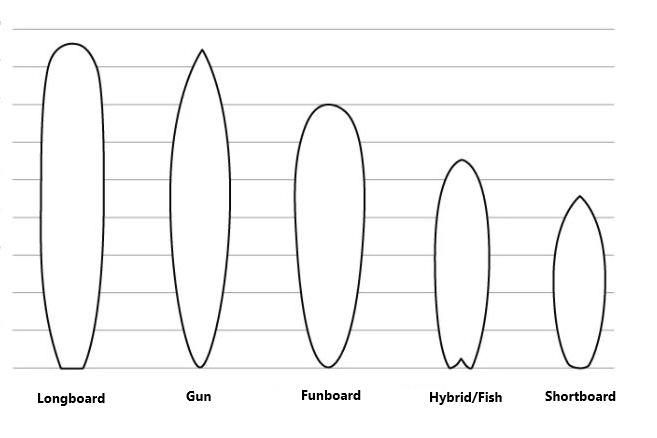
As for beginners, the right transition is from longboards to fanboards and eventually to shortboards.
For more information about surfboard size, check this out.
Surfboard construction
Not all surfboards available on the market are made from the same material. The three most common constructions are softboard (soft top), traditional PU (polyurethane), and epoxy construction.
Soft top
Softboards are often used for teaching in schools because they have soft coatings which makes them more durable and safer. So for surfing newcomers, softboards are cheap and great for practicing and learning. But once your surfing achieves a certain level, it’d be necessary to replace it with other types.
Pros
- Quite durable
- Safe
- Very cheap
- Suitable for learning
Cons
- May not suit intermediate or advanced surfers
- Don’t have many options
PU
PU, short for polyurethane, is the most traditional surfboard construction. A great variety of PU surfboards are available on the global market. They are generally lightweight and easy to fix.
Pros
- Bunches of options on the market
- Lightweight and easy to repair
Cons
- Less durable
- Require great car
Epoxy
Epoxy boards are lightweight and can last for years. Unlike softboards only friendly to beginners, epoxy surfboards also have high performance to meet the needs of intermediate and advanced surfers.
Pros
- Bunches of options
- Very durable
- Used for traveling
Cons
- Unstable quality among different brands
- May be heavy
Fins
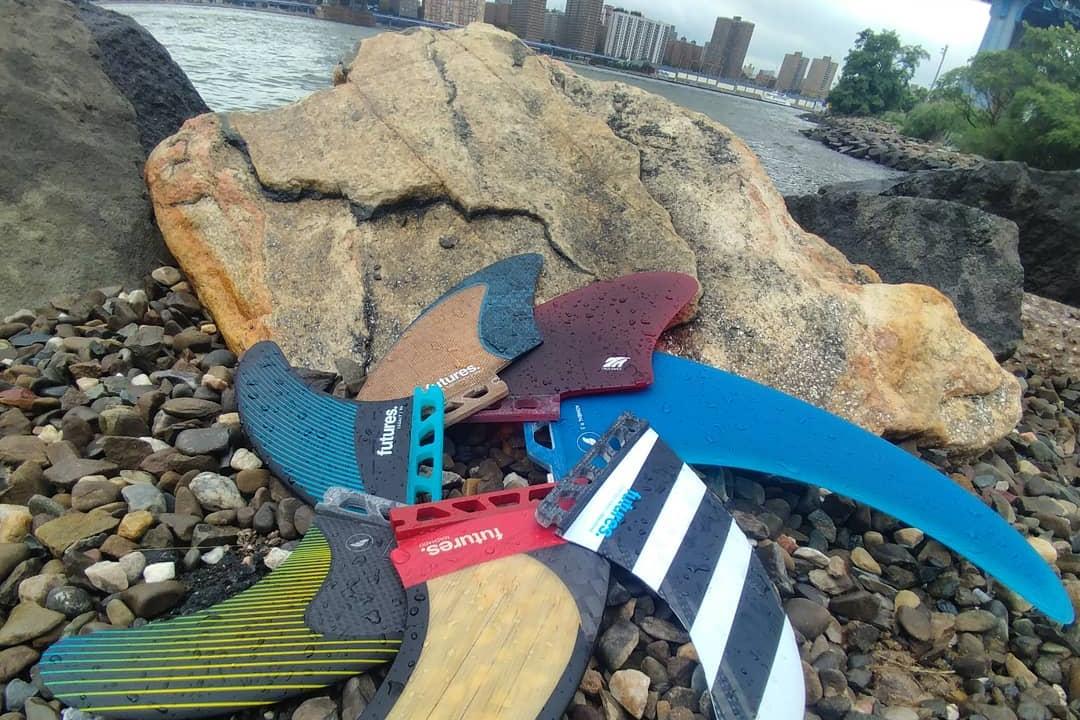
Four common options are available for beginners to choose from:
- Single fin: often for longboards
- Twin fin: usually for fish boards
- Thruster: three fins
- Quad fin: four fins
Curious about the development of fins? Check this out.
Cost
Surfboard’s price varies from $100 to $1200. High-priced surfboards generally are better than low-priced ones. Factors that may decide the surfboard’s cost are as follows.
- Size: beginners are more suitable for longer and larger surfboards. Bigger surfboards often mean higher prices.
- Material: surfboards are mainly made from foam or fiberglass. Foam surfboards are cheaper and better for learning.
- Used or New: new surfboards often cost more.
Learn more details about surfboard’s cost.
Wave conditions
Riding waves with the wrong surfboard will be frustrating, even for experienced surfers. Longboards often fit well in mellow and slow waves, while shortboards are better for riding on steeper and hollow waves.
Click here to know more about wave conditions.
Surfers’ body dimensions
Typically, the surfboard’s length is sized to the surfer’s height. Longer surfboards are for taller surfers. Nowadays, however, the surfer’s weight has also been taken into account. Higher surfer often needs surfboards with more volume.
See here for more factors.
Surfboards Best for Beginners
Although it may depend on your surfing style and personal preference, the best surfboards for beginners usually have similar features as follows:
- Are durable and safe for teaching and learning, like soft top surfboards and epoxy boards.
- Are long enough to ensure the stability
- Have a wider shape that is also good for stability
- Are big enough to float the surfer well
- Are easy to use, like paddling and catching waves.
See here to know why longboards are the best boards for beginners.
Surfboards Worst for Beginners
To avoid wrong choices and unnecessary failures, the article also points out some features not suitable for surfing beginners.
- Are shortboards not stability-friendly
- With a more narrow shape
- Not big enough to support the surfer (often thinner or lighter)
- Are difficult to use, like paddling and catching waves
Our Picks for Best Surfboards
It’s always challenging to pick out the best surfboards, especially for beginners, as various choices are available on the market. To save your time, LumBuy has screened out high-quality surfboards for you to choose from. Click here to find your right one.
Accessories for Your First Surfboard
- Wax: used to prevent you from slipping down.
- Leash: a rope to connect you with the surfboard
- Traction pad: pretty useful when you choose an epoxy or PU board.
- Wet-dry bag: a good buddy to carry your wetsuit
- Sunscreen: used to protect you from getting burned under strong sunlight
- Scraper and wax comb: used to remove wax from your surfboard
Learn more accessories for your surfboard from here.
3. Precautions Before Surfing
Wax Your Surfboard
To ensure safe and stable surfing, you have to know something about surfboard waxing.
Why wax the surfboard
Applying wax on a surfboard, also known as an anti-slip process, is an effective way to improve the grip and guarantee stable surfing. The right applied wax can protect your body and feet from slipping down.
Types of wax
Be careful about your surf wax choice. The wax applied should vary depending on where and when you’re surfing. It’s the water temperature that matters a lot.
There are five different topcoats for you to pick.
- Tropical
- Warm
- Cool
- Cold
- Super tack
Click here for the features of each type.
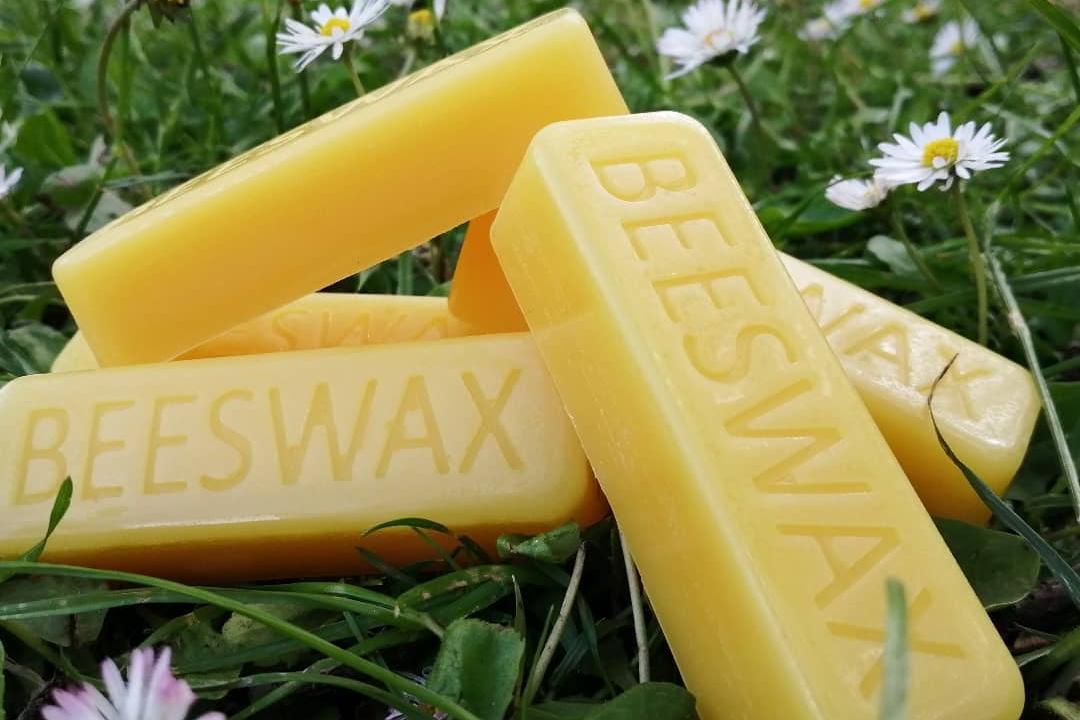
Steps to wax the surfboard
Here is a step-by-step guide for you to wax your first surfboard.
- Before waxing, remember to clean your surfboard.
- Apply the base coat. You can do it in circles or crisscrosses.
- Apply your topcoat in small circles
When to change the wax
You may consider changing the surfboard wax when:
- Grains have a crush.
- There is a turn of the season.
- You find obvious dirt on the wax.
Tips to Ensure Your Safe Surfing
Safety concerns always come first when beginners start their first surfing. But if you have a combination of safety awareness, the right surfing equipment, and basic fitness, most of the risks related to surfboard can be dramatically reduced.
Try your best to keep the following safety tips in mind, and you may thank yourself for reading them in the future.
- Always take a strong hold of your surfboard
- Protect your head first in case of falling
- Keep the surfboard to your side when encountering rising waves
- Learn more related to rip currents
- Watch out for obstacles
- Figure out your entry & exit strategy in advance
Check here for more safety tips.
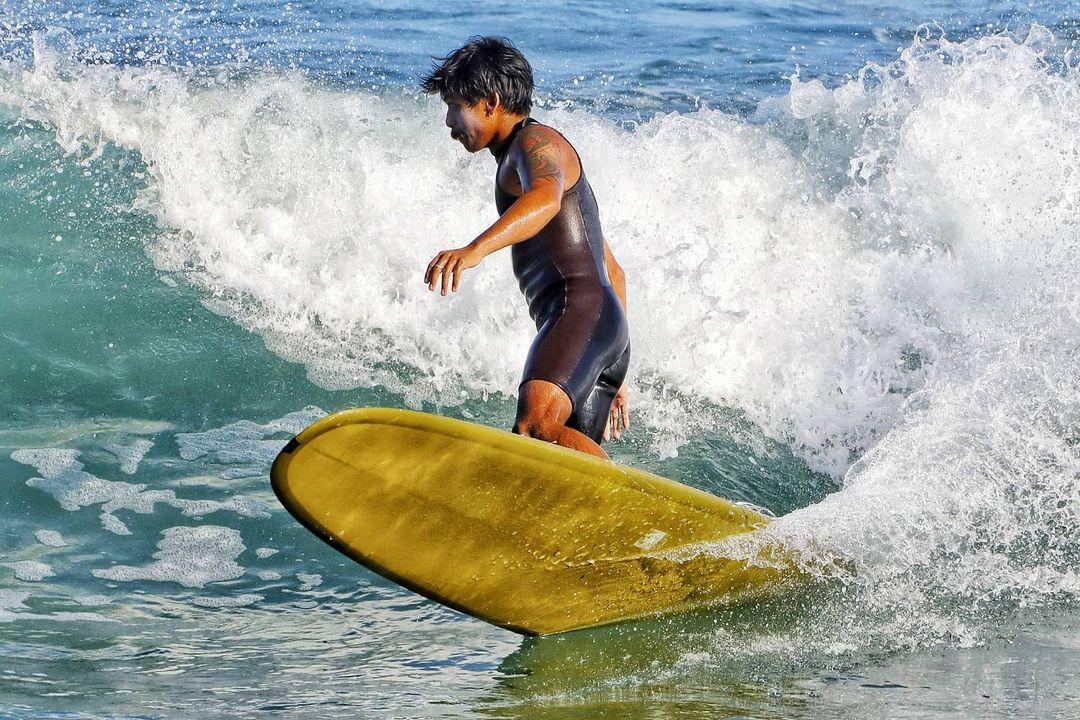
If you think these tips are hard to remember, a simple safety checklist is provided to assist you.
Before surfing
- Don’t surf alone
- Tell your surfing plan to someone
- Check the tides and weather
- Always carry a leash and wear it
- Wear the wetsuit best for youself
During surfing
- Be aware of your limits
- Know the rip currents
- Always keep yourself surfing between the white and black chequered flags
- Follow surf etiquette
4. Start Your First Surfing
With your surfboard ready, now it’s time to begin your first surfing.
Where to Surf
One of the most important points to have a fantastic surfing experience is to find where to begin your surfing. The right spots for beginners are often where the waves slowly break in a waist- or chest-deep water. The places should not be crowded with people, thus leaving enough room for you to practice paddling and catching waves.
You can find a list of the top 50 surf spots from here.
Or, if you prefer to surf nearby, you can search online to find the best surf places for beginners in your city. Local schools teaching kids surfing will be good choices. Just remember, don’t go to those crowded famous surf spots. They are not beginner-friendly.
How to Surf a Surfboard as Beginners
- Get the right equipment. Make sure the surfboard is soft and long enough for your first time.
- Practice your movement on the ground first.
- Find a suitable place to surf, where the water is waist-deep, and the waves are broken.
- Start surfing.
Click here for more tips on surfing a surfboard as a beginner.
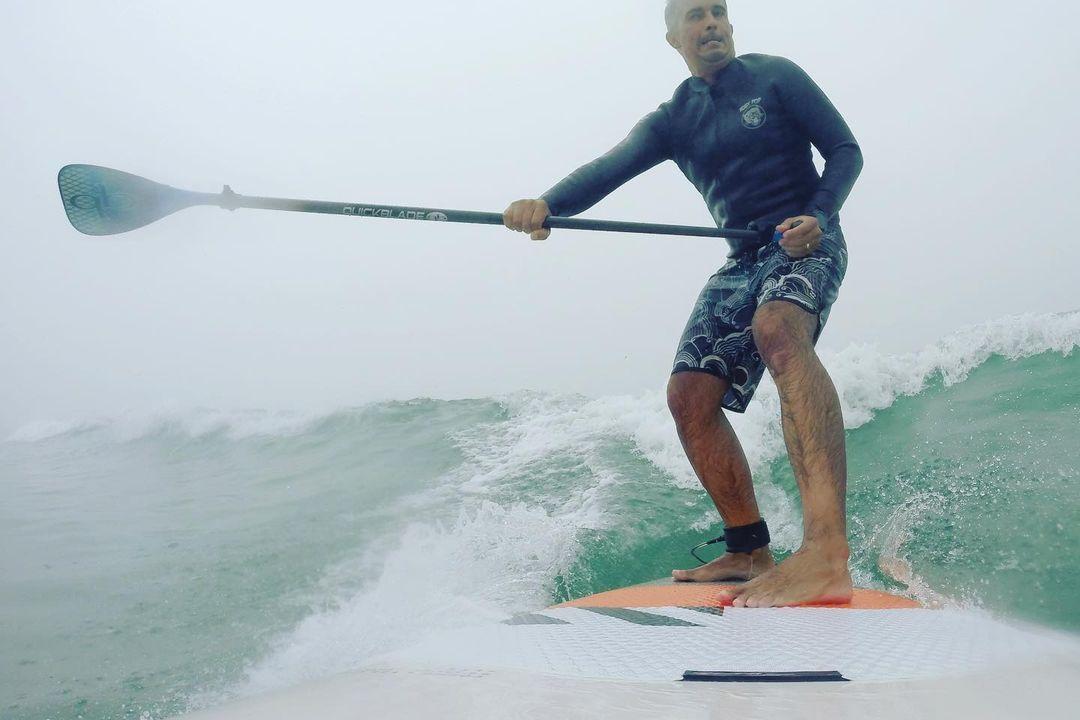
How to Paddle on Your Surfboard
For beginners, longboards are safer and easier to paddle. Riding a longboard properly is not a piece of cake but requires the right techniques and continuous practice.
- Paddle out: before paddling, make sure the water is waist-deep and smooth. When the water is rising to the waist, lie flat and head out by crawl strokes.
- Catch the wave: in the face of oncoming waves, turn your longboard aside and make the waves from behind. Make sure your body is close to the surfboard’s center.
- Body position: keep balanced when padding on your surfboard.
- Avoid dangers: there is a risk of drowning or collision when paddling on a surfboard.
Check more details about paddling.
How to Catch Waves and Ride Them
Step one
Before paddling, try to pop up first. You should press your hands into the surfboard or ground under your chest and then spring to your feet at one time. Keep practicing until you get comfortable with the movement.
Step two
Start paddling out by following the guide above (How to paddle on your surfboard).
Step three
When seeing the wave to catch, turn your back and face your surfboard’s nose. Lie down and start paddling.
Read more from here.
How to Make Your Surfboard More Stable
Surfing stability guarantees your safety on the surfboard. Therefore, the method of keeping your surfboard steady is the first and important lesson to learn. Only that, you’re able to make moves and stunts with no risk.
There are several ways to strengthen your surfboard stability. Expanding the board’s width is one of the effective approaches, so is the surfboard waxing. The surf wax can prevent you from slipping down the surfboard while you’re riding the rising waves.
Learn more about surfboard stability from here.
Beginner Mistakes to Avoid
- Don’t sit on your surfboard until you’re chest or waist above water.
- Don’t stand oblique to the waves. Remember to meet waves at a perpendicular angle to gain momentum.
- Flip your surfboard, waiting for waves.
- When catching the wave, hurry up and don’t spin, or you’ll lose power.
- Stay focused.
- Anytime you feel losing, or the wave is going down, remember to jump off your surfboard.
- Don’t block the way of other surfers if you fall.
Click here to know more details.
5. Skills Making You More Professional
A surfer who doesn’t want to be professional is not a true surfing lover. A true surfboard lover will always strive to make the surfboard as fast as possible.
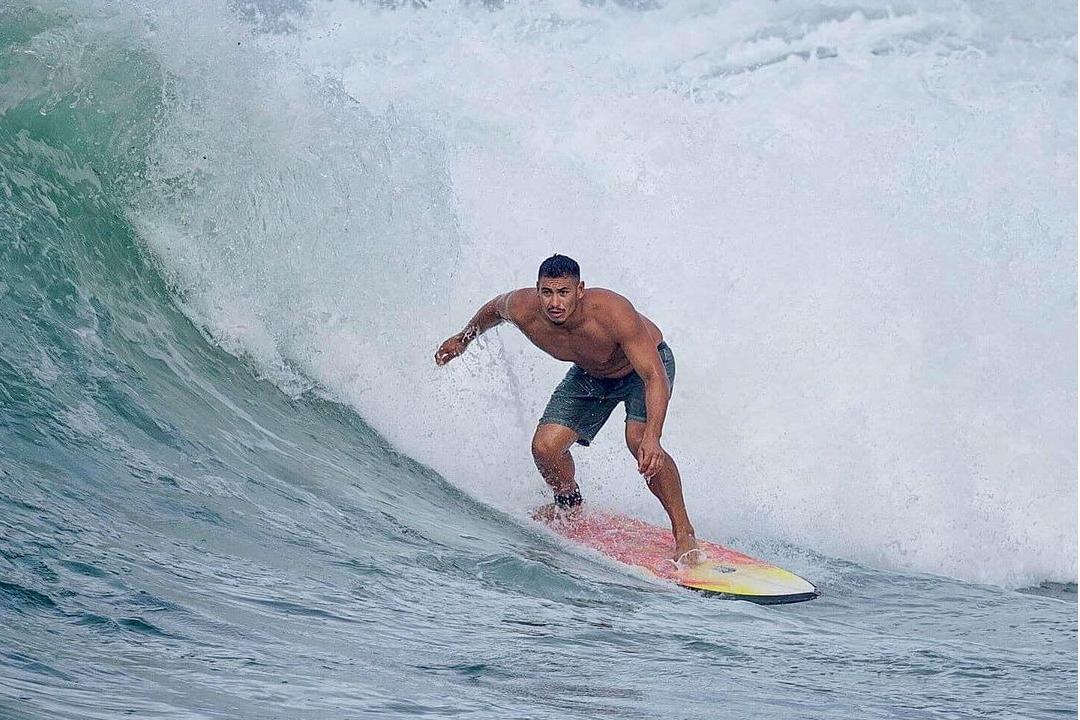
Make Your Surfboard Faster
The quick speed brings a ton of possibilities and excitement. To make your surfboard faster, keep reading to find your way.
- By pumping: encounter the waves in a super-smooth movement.
- Using arms: remember to use arms when turning your surfboard.
- By bouncing: combines the side movement with the up-down motion.
- Knowing the time to compress and decompress: recognize the exact time to be light or heavy. It’s crucial for generating the speed you want.
- Staying connected to wave power: always surf in the right place of the oncoming waves.
See here for more details.
Pop up Faster on Your Surfboard
Popping up refers to the action of standing up on your surfboard. The speed of popping up is associated with the heights of both the surfboard and yourself. A 170-cm high adult can get a surfboard with a height of 210 cm (6’9 “) plus 40 cm.
Read the complete guide from here.
Keep Practicing
Rome was not built in a day. To make you look more professional, it’s of great importance to keep practicing and training on the surfboard. Only when you’ve done massive surfing, you’ll get a chance to become the king of the surfboard.
Strengthen Your Surfing Muscle
In addition to practicing surfing alone, it’s also recommended to strengthen your muscles for surfing. Building your muscles during free time is conducive to enhancing your physical strength and helping you perform better on the surfboard.
A dumbbell will be a great helper to achieve that. Stick to dumbbell front-lateral raises, and you will be surprised to find your deltoid muscles for padding have been strengthened as well.
Click here to find high-quality dumbbells.
6. Tips to Make Your Surfboard Stick Out
When going to the beach, a surfboard can be a window to show your personality and creativity. A glossy one attracts people’s attention at all times. Here are the handy tips to make you and your surfboard stand out.
Clean Your Surfboard Regularly
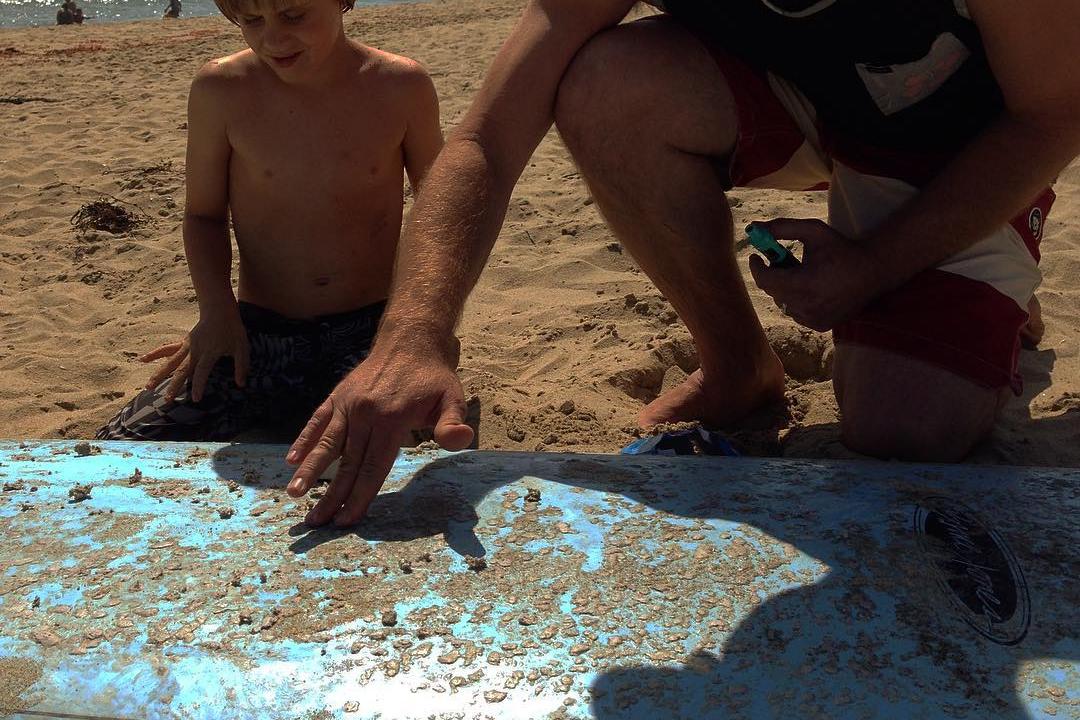
Your favorite surfboard must have been subjected to various environmental conditions as you always carry it to surf. Under the different conditions, the surfboard tends to develop dings, cracks, or dirt, making it less shiny and charming.
Therefore, it’s necessary to have a thorough cleaning of your favorite buddy every season. Besides, as you want to have a shower after visiting the beach, it’s feasible to give your surfboard a rinse after every surfing. It may seem troublesome, but all you need is just to follow the complete surfboard cleaning guide, and then you’ll find something amazing.
Here is a simple version:
- Put your surfboard in sunlight.
- Timely re-wax your surfboard once the old wax becomes muddy and dark.
- Frisk a wax comb to clean the stuck wax.
- Pour warm water to clean the remnants of wax after using a wax comb.
- Apply the cleaning spray evenly on your surfboard and clean it off.
- Add a spoon of coconut oil
- Remember to put clean and dry rugs or towels on your surfboard.
Give Your Surfboard a Creative Painting
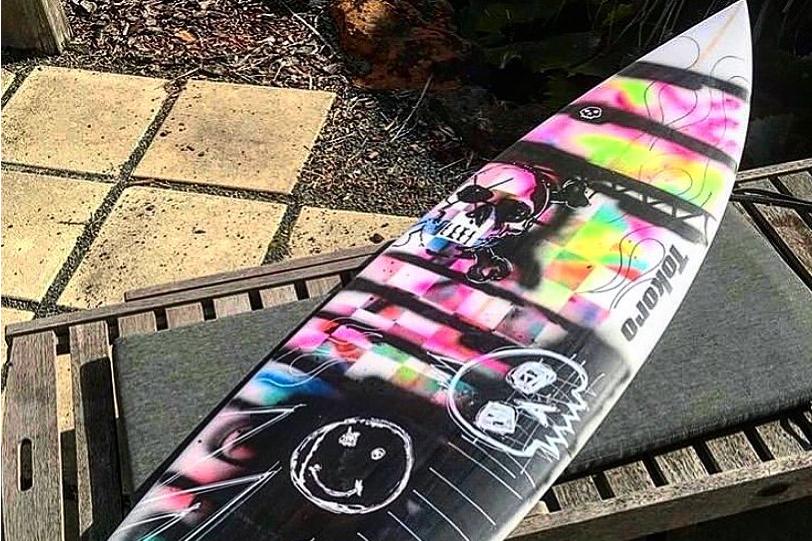
Looking around the beach, you may have a chance to know surfers’ personalities or preferences through their surfboard looks.
Painting the surfboard at your will is cool stuff, especially when the surfboard’s original look is not your type. It’s like you are creating something interesting, and once finished, you’re bound to get a great sense of achievement.
So save your time and start your surfboard painting adventure! It is not as difficult as you think.
7. FAQ Part
Before getting started, you may still have a few questions that the article doesn’t cover above. Here are several commonly-asked questions about the surfboard.
Can You Make Your Surfboard at Home?
It’s always practical to make your own surfboard. But it’s not recommended for a beginner because you don’t have a real feeling of what surfboard is suitable for you. Moreover, before making, you have to prepare durable materials, pick out proper tools, as well as to search through a bunch of instruction videos or articles to find the best steps. It’s time-wasting and energy-consuming.
Therefore, as surf beginners, it’d be better to buy the best surfboard for your first surfing. After you become a surfing master, you can consider clicking this guide to make your own surfboard at home.
How to Repair Your Surfboard?
While enjoying the happy time spent surfing, you also have to know basic knowledge about surfboard repairing. Because a professional mechanic may not be your side anytime and anywhere, and it’s possible to solve simple surfboard problems on your own by mastering some useful tips.
Learn more about surfboard repairing.
How to Remove Wax From Your Surfboard?
Removing wax is as vital as waxing your surfboard. Once the old wax on your surfboard gets dark or dirty, you may consider removing it and applying a new layer. For removing, you need a remover liquid and a scraper.
Learn more about removing wax from the surfboard.

